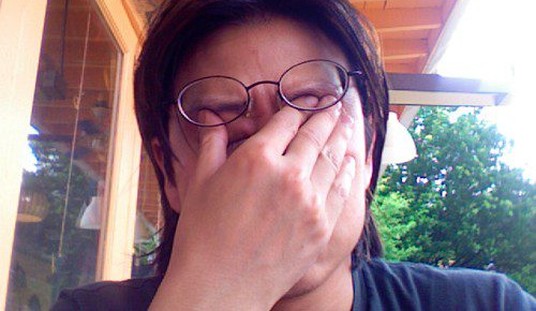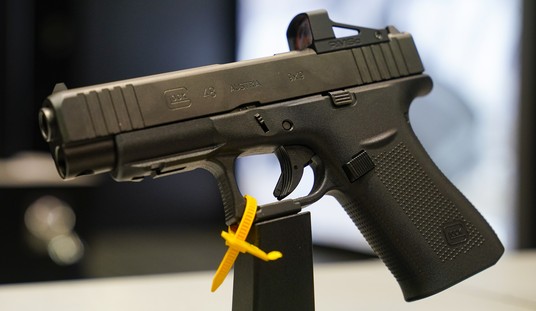The San Bernardino County district attorney’s office has released a 59-page report (PDF) that clears law enforcement officers involved in the firefight with former LAPD officer and rabid gun control supporter Christopher Dorner.
Dorner had murdered the daughter of the LAPD officer and her fiance on February 3, 2013, and then had engaged in shootouts with separate police units on February 7, killing one officer and striking two others. Dorner then fled to Big Bear, California, where his burning truck was discovered later in the day. Dorner was able to hide within site of the police command post for five days before finally attempting an escape on February 12. The husband and wife he had held captive during this time were able to provide authorities information about the stolen vehicle he was driving, at which point all available law enforcement agencies attempted to converge upon him.
After swapping vehicles several times and firing upon officers that crossed his path, Dorner took cover inside a vacation cabin and engaged responding officers, critically wounding two officers in a group that he had pinned down in front of the cabin, one of whom died.
Other officers responded to the scene as Dorner continued to engage the group of officers he had pinned down in front of the cabin.
The report then goes on to described what happens next as a rescue mission.
Officers fired into the cabin to suppress the gunfire from Dorner and attempt to rescue the downed and trapped officers. Numerous additional officers arrived to provide assistance. At this time, Deputy 10 took cover next to a lodge to the east of the cabin occupied by Dorner. Rounds continued to hit the car in front of the cabin. Officers then continued to fire on the cabin as smoke was deployed in an attempt to rescue the
downed officers. The first volley of smoke failed and a second deployment of smoke
was utilized. Detective 11 and Deputy 13 went to the car in front of the cabin in an
attempt to rescue the downed deputies. Deputy 4 assisted Detective 11 in dragging
Detective 1 behind nearby vehicles, while Deputy 13 pulled Deputy 2 to safety.Deputy 2 and Detective 1 were put into the backseat of a truck and were driven to a
landing zone. From there they were airlifted to Loma Linda University Medical Center.
After the extraction of those deputies, the focus turned on extracting personnel out of
the immediate firing area who were pinned down in front of the cabin. At this time it was decided that Specialized Enforcement Division (SED) personnel would take up positions that would allow Non-SED personnel to be extracted from that area. The San
Bernardino Police Department’s “Bearcat” (an armored personnel carrier) was used for
the extraction.The “Bearcat” was pulled in front of the cabin. Officer 34 saw mattresses and other
furniture barricaded against the south facing windows of the cabin. Gunfire was
directed to the southeast corner of the cabin. Officers in the back of the “Bearcat” were
directed to fire upon the cabin in order to extract personnel from behind the vehicles in
front of the cabin. Extraction was completed in two separate trips.At this time, deputies deployed “cold gas”1 tear gas rounds from 37mm gas guns into
the south side of the cabin. Prior to, and during, deployment, Lieutenant 28 made
several P.A. announcements urging Dorner to surrender. Not all of the rounds entered
the cabin due to Dorner having blocked the windows with mattresses and other
furniture. It became apparent that the tear gas was not effective. It was decided that
sending in an entry team would not be safe because Dorner was deploying green
smoke within the cabin, and it became obvious that Dorner would shoot at SWAT
personnel if entry was attempted.At that time, because the “cold” gas was ineffective, and sending law enforcement into
the cabin would likely result in more officers being shot and killed, the decision was
made to deploy pyrotechnic gas2 into the cabin in an attempt to cause Dorner to
surrender.Law enforcement knew that this delivery system would be much more effective in saturating the cabin with tear gas and believed it would force Dorner to surrender.
At this time, a tactical tractor from the San Bernardino County Sheriff’s Department was brought in with an order to “port” (create an opening in) the doors and windows on the east side of the cabin. A door to the southeast of the cabin and two windows to the left and right of that door were removed. Green smoke was then seen coming from the
interior of the cabin. At this time, the San Bernardino County Sheriff’s Department’s
“Bear” (a second armored personnel carrier) was utilized. Lieutenant 28 made
numerous commands over a public address system (PA) to Dorner to give up and come
out. Lieutenant 28 told Dorner that they would utilize “hot gas” and that it was time to
give up. There was no response by Dorner.It was decided that pyrotechnic gas, or “hot” gas, would be utilized because the other
types of gas deployed had no effect. The tactical tractor would normally be used for this
type of deployment but, due to the snow, there was difficulty maneuvering it. It was also determined that it would take too long to replenish the gas canisters using the tractor and that course of action would not have allowed sufficient saturation of gas to occur. It was decided that the gas would be deployed by hand.Shortly after deployment of the “hot” gas, a small fire started on the exterior wall of the southeast corner of the cabin. The fire spread for several minutes. During this time,
Dorner had ample time to surrender and exit the cabin but did not do so. Doors and
windows on the east, north and west sides of the cabin were unaffected by the fire.As the fire spread, law enforcement personnel heard a single distinctive gunshot coming from the cabin. The gunshot sounded different than the earlier gunshots. The shot was described as louder than the others. Officers believed that this shot came from a different weapon than the one used by Dorner during the initial exchange of gunfire.
Within a few minutes after hearing the shot, large amounts of ammunition could be heard exploding from inside the cabin as the fire spread.
There has been substantial criticism of the decision to use incendiary CS gas to try to force Dorner from the cabin after the less potent “cold” form failed to force him into surrendering. At least one officer referred to the gas canisters as “burners,” suggesting that officers knew that the deployment of the gas would likely set the cabin on fire.
Typically, critics feel that since law enforcement officers had Dorner surrounded at that point, they should simply have tried try to wait him out… presumably as he continued to fire upon officers as opportunities presented themselves. Subscribers to this view tend to view the deployment of the incendiary gas as a violation of Dorner’s due process rights, and some have referred to it as an “execution.”
It seems officers intended to force Dorner’s hand and bringing the situation to a quick resolution, and not run the risk that more officers would be exposed to continued fire from the fugitive, who had already killed one officer while firing from the location, and who had critically injured another.
The district attorney’s office has unsurprisingly found that such a resolution was legal and justified under the circumstances.
Do you agree, or disagree?






Join the conversation as a VIP Member